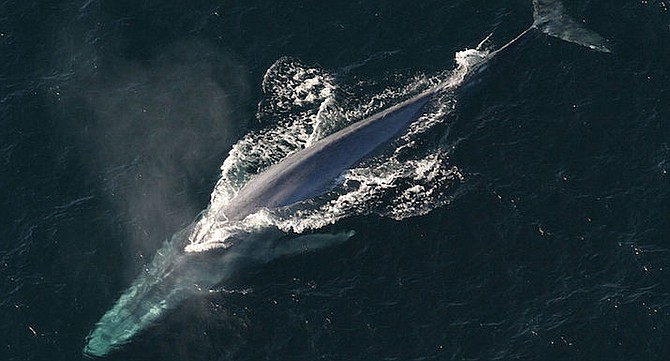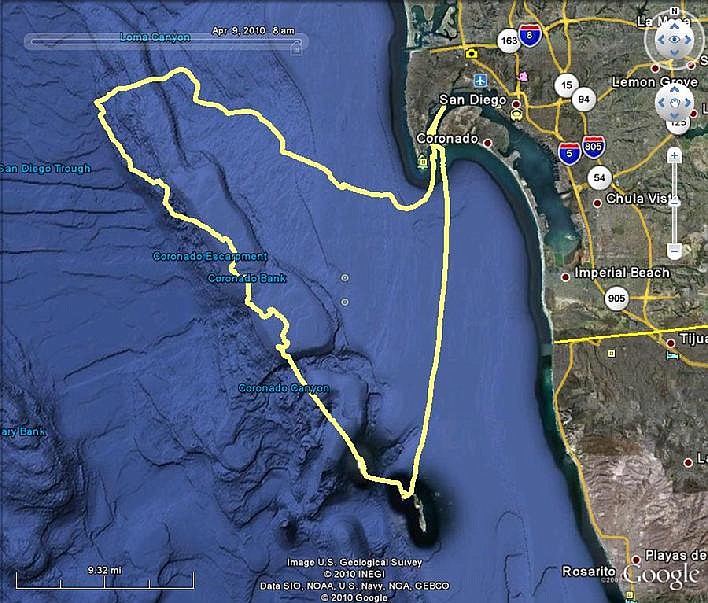 Facebook
Facebook
 X
X
 Instagram
Instagram
 TikTok
TikTok
 Youtube
Youtube

As summer begins and springtime fades, the gray whales have completed their trip from the seas off Alaska to the lagoons of Baja Sur and back. But for those seeking whales to watch, this is the time for the giants: the blue whales. Growing to one hundred feet in length and weighing nearly two hundred tons, the blue whale is the largest animal known to have existed.

Blue whales are shaded blue-gray on top, or ‘dorsally’, and is usually a little lighter underneath. It is a baleen whale, so its diet consists mostly of krill – tiny crustaceans - from nearly microscopic in size to the two to three inch, lobster-looking pelagic, or ‘tuna’ crab we have seen often washing up, like a red tide of bugs, on our beaches
Blue whales were abundant in the oceans worldwide until around 1900. From the late 1800s through the mid-20th century, they were hunted to near extinction. International protection was implemented in 1966 and they have recovered in population in the eastern North Pacific to near pre-hunting levels
As of June 30 and through September 3rd, Hornblower is running trips targeting blue whales offshore. These are four-hour tours, usually to the 9-Mile Bank. The 9-Mile Bank runs on a line north to south, from off Mission Bay to just north of the Coronado Islands in Mexican waters. Each tour is narrated by the captain, as well as an onboard naturalist from the San Diego Natural History Museum.


As summer begins and springtime fades, the gray whales have completed their trip from the seas off Alaska to the lagoons of Baja Sur and back. But for those seeking whales to watch, this is the time for the giants: the blue whales. Growing to one hundred feet in length and weighing nearly two hundred tons, the blue whale is the largest animal known to have existed.

Blue whales are shaded blue-gray on top, or ‘dorsally’, and is usually a little lighter underneath. It is a baleen whale, so its diet consists mostly of krill – tiny crustaceans - from nearly microscopic in size to the two to three inch, lobster-looking pelagic, or ‘tuna’ crab we have seen often washing up, like a red tide of bugs, on our beaches
Blue whales were abundant in the oceans worldwide until around 1900. From the late 1800s through the mid-20th century, they were hunted to near extinction. International protection was implemented in 1966 and they have recovered in population in the eastern North Pacific to near pre-hunting levels
As of June 30 and through September 3rd, Hornblower is running trips targeting blue whales offshore. These are four-hour tours, usually to the 9-Mile Bank. The 9-Mile Bank runs on a line north to south, from off Mission Bay to just north of the Coronado Islands in Mexican waters. Each tour is narrated by the captain, as well as an onboard naturalist from the San Diego Natural History Museum.
Comments